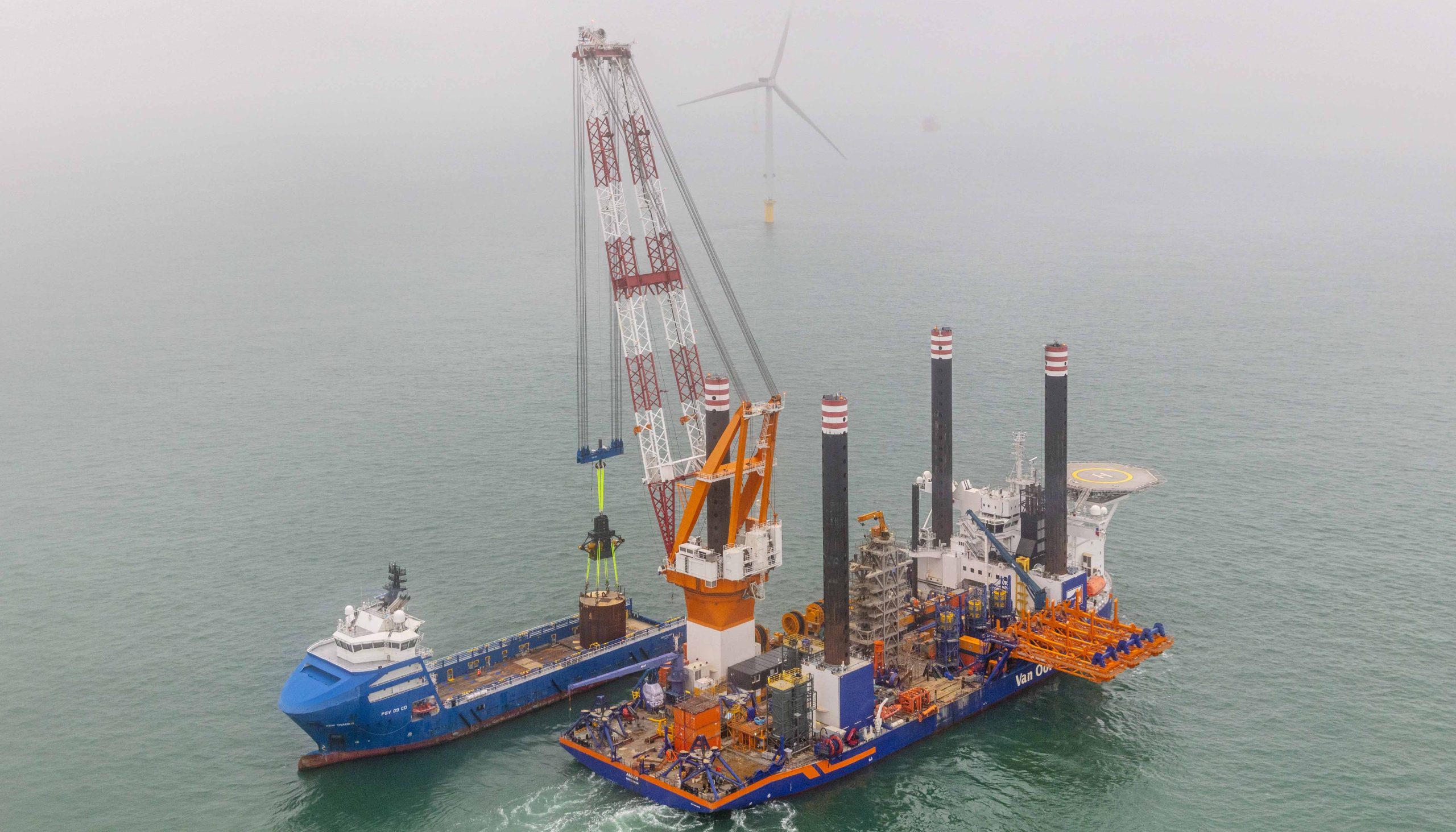In no less than 62 hours of rigorous offshore testing, tech scale-up Seaqualize successfully completed offshore trials for its inline Active Heave Compensator (iAHC), the ‘Delta600’. Together with testing partners Van Oord and nautical research institute MARIN, the offshore lifting tool was tested for fixed-to-floating, floating-to-fixed and floating-to-floating transfers of 300mT loads. The Delta600 is DNV certified and ready for work.
The Seaqualize Delta – the world’s first iAHC
Since December 2019, Seaqualize, developed the world’s first iAHC: a tool specifically designed for heavy lift, in-air load control. The tool can balance and transfer loads of up to 600mT in mid-air, while the barge or crane vessel is heaving up and down in heavy seas of up to Hs2,5m.
Increased 4-season uptime
This functionality is of great benefit during offshore wind turbine installations or when lifting delicate loads to and from floating supply vessels or barges. By engaging the Delta, the operational time for installation contractors greatly increases, especially in the hard-to-work winter, autumn or spring seasons. It offers contractors greater planning flexibility, and lifting crew a higher level of control, safety and efficiency. With the worldwide increase in demand in the offshore wind sector, increased capacity and efficiency is greatly needed. In the wider offshore community, perfectly controlled lifts are equally essential to safe, timely and efficient operations.
During these offshore trials, the Delta600 lifted a test weight to and from the floating supply vessel REM TRADER, using Van Oord’s jack-up crane vessel AEOLUS in both jacked and floating conditions. These floating-to-floating and floating-to-fixed lifts were operational tests of typical challenges in the offshore wind industry: installing turbine components using a floating vessel, or picking up components from a floating supply vessel. Such ’feeder barge’ operations are essential in for example the US wind market. Transferring the most delicate parts of a wind turbine offshore is new to the market, and such operations comprise demanding lifting conditions and a new set of tools.
Wouter Dirks, Innovation Manager at Van Oord: “The offshore tests showed that the unique technology in the Delta will enable controlled offshore lifts during challenging feeder barge operations”.
Key test results
During the tests, several very gentle set downs and quick liftoffs have been performed. MARIN observed that the tool is able to control the load within an envelope of 5cm, with minimal accelerations and dynamic crane forces. Liftoffs where performed with a solid 90% of the load already in the hook of the crane before liftoff, while still fully compensating all waves. This significantly reduces impact loads on the load, crane and rigging and results in a controlled and stable liftoff. Finally, the tool showed off its “follow-mode”, where the test weight could actively match all heave motions of the target vessel, to further minimize set-down impact for floating to floating set downs.
This offshore trial was also the last step in full DNV product certification as a standard offshore lifting tool. The research project was executed with a grant from the Ministry of Economic affairs of the Netherlands, and included Dutch research agency TNO besides the offshore testing partners MARIN, Van Oord Offshore Wind and Seaqualize.
Next steps: offshore deployment and up to the Delta1000
600mT Lifting may seem like a lot (e.g. it’s equivalent to 3 Boeing 747’s), but offshore wind turbine sizes are growing explosively, thus requiring ever bigger lifting tools for still very delicate components. Currently Seaqualize is designing the next version, the Delta1000, equipped for all next generation wind turbine components. Further conceptual improvements include the addition of single lifting points for quick-connect systems, and smart controlled tugger winches for supreme control in the horizontal plane. At the same time, the company will further develop its offshore operational support capabilities, by deploying the Delta600 in the field.


























